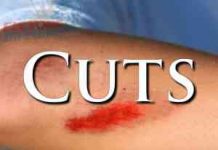How To Treat Blisters With Basic First Aid
If you ride, you’ve had blisters on your hands, feet, or both. There’s no way around it; they are a part of our lifestyle.
 Of course, the most effective first aid treatment for blisters is to prevent them from occurring in the first place. For that, I recommend you invest in a quality pair of gloves and properly fitted boots. But even then, they will still occasionally show up, especially after prolonged and vigorous rides.
Of course, the most effective first aid treatment for blisters is to prevent them from occurring in the first place. For that, I recommend you invest in a quality pair of gloves and properly fitted boots. But even then, they will still occasionally show up, especially after prolonged and vigorous rides.
So, when the inevitable blister forms on your body, here’s what you can do to prevent infection, help alleviate the pain, and speed up the healing process a bit.
What Do Friction Blisters Look Like?
Blisters are pockets of fluid that form on the surface of the skin. They fill with a substance called sebum, which is essentially plasma without the red blood cells and platelets. It’s function is to protect the underlying layers of skin from further damage.
 What Causes Blisters?
What Causes Blisters?
The most common causes of blisters are heavy friction on the skin’s surface caused by the harsh and repeated rubbing of the area, and burns. They can also form in response to certain medical conditions (herpes and chickenpox) and exposure to certain chemicals.
** Note: Most of our blisters stem from heavy friction (gripping the handlebars and twisting the throttle) and contact burns. I’ve covered how to treat burns (and their blisters) here, so in this article, I’m going to focus exclusively on blisters caused by friction.
Symptoms
There’s little guesswork involved in the diagnosis. There are only a couple of signs, and they’re easy to spot.
- Raised area on the skin (usually on hands or feet) that are filled with fluid (sebum).
- Possible pain at the site of the affected area(s)
Related: Poison Ivy is no joke, here’s how to treat it if you ever come in contact with it.
How Long Does It Take To Heal?
A single friction blister will most often not require any immediate first aid attention. It should heal on its own in a few days, leaving behind zero evidence of its existence.
But there are times when the blister is a little more troublesome, and there are multiple presents. In those cases, here’s what you should do:
- Don’t pop it. The blister is there for a reason, and that reason is to protect your skin. Popping it will not only prolong the healing process but also potentially lead to an infection.
- Cover with a loose-fitting, protective wrap (gauze, ace bandage, etc.). This will help prevent it from popping.
- If the pain is present, apply ice to the area on and around the blister. This will help alleviate some of the pain. But make sure not to use the ice directly on the blister.
Should I Pop It?

Sometimes the blister will accidentally get popped even after taking preventative measures. If that happens, here’s what first aid you should do:
- Do not remove any of the skin. Leave the skin alone and let it finish draining the rest of the fluid.
- Cover it with a dressing. Once popped, it will become more susceptible to infection. Using a gauze pad or other wrapping will help prevent disease.
Related: More first aid training to help yourself and your riding buddies.
Again, blisters are a fact of life when you ride, and the best treatment is always prevention. You can take several steps to avoid injuring your hands and feet using tape and moleskin.
If you have any questions or anything to add, please leave them in the comments or on our FaceBook page!
Keep Reading – Hypothermia First Aid





